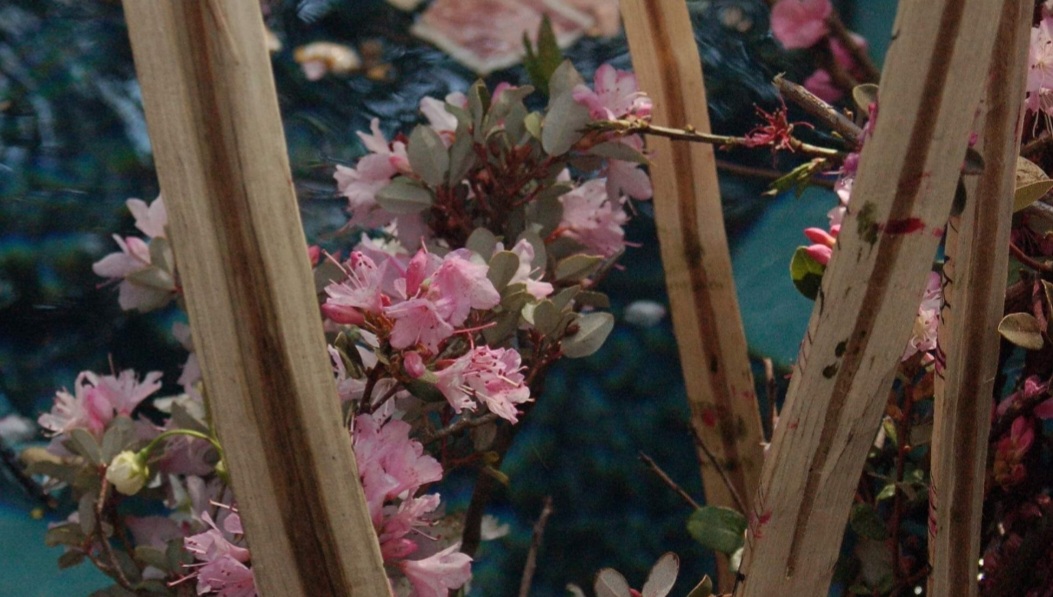Botanists say spring arriving earlier, in response to warming temperatures and greater rainfall in some locations
Daffodils, violets and other flowers are arriving early in many gardens and fields this spring, unfurling lovely colors and shedding light on how plants are adapting to climate change.
Observers are reporting very early leaf outs of the common lilac in Pennsylvania, the brilliant yellow blossoms of forsythia in Maine and American witch hazel in New York, said Theresa Crimmins, director of the USA National Phenology Network at the University of Arizona.
Ecologist Matt Austin examined more than 140 years of pressed flowers and plants in the Missouri Botanical Garden collection to track how violets changed over time. He found the flowers — widely known as one of the first harbingers of spring — are responding to both increased rainfall and warmer temperatures.
Recent studies in China, Canada and the Himalayas also show earlier starts to spring seasons.
When is spring? Flower blooms come early this year
Spring officially starts March 20, 2023, although meteorologists define spring as March, April, and May. However, signs of spring like flower blooms and warmer weather can show up even earlier — and this year they did.
Spring is early across much of the United States, Crimmins said, “but it’s arriving in certain locations earlier than we’ve ever seen it arrive in the 40 years that we have data where we’re tracking things.”
The Network’s Nature’s Notebook program gathers information from observers across the nation, who have helped amass more than 30 million records since 2009, Crimmins said.
“This year, a really mild winter has been followed by persistent warm temperatures,” she said. “The earlier springs really stand out in places like New York City.”
These early blooming and budding plants and trees cause allergies earlier in the year and are disrupting years of synchronicity between pollinators and plants that need them for reproduction, she said.
What does historical data say?
One historical data set from New York state in the 1800s compared with modern records revealed how plants are changing there statewide.
Researchers found a majority of the species in that historical data are flowering and leafing out earlier, according to a 2022 paper Crimmins helped co-author with Kerissa Fuccillo Battle of the Community Greenways Collaborative and others. Plants flowered an average of 10.5 days earlier and leafed out 19 days earlier than in the 1800s data.
Here’s why scientists say the plants are changing:
The New York study found leafing and blooming associated with a warming trend in mean January-to-April average temperatures.
January was the warmest on record for seven states in the Northeast, and among the top 10 warmest for 20 others states, federal officials said.
In February, temperatures at 192 reporting stations in the nation averaged 3.5 degrees above normal, according to federal data provided by Climate Central.
Last year was one of the warmest years on record in the U.S. and around the globe.
Why are violets blooming earlier?
Common blue violets are making the most of that, producing showier blooms, said Austin, an ecologist at Washington University in St. Louis and the botanical garden.
Common blue violets are a great research subject, Austin said, because they use two different kinds of reproduction: cross pollination — where they produce wide open, showy blooms that rely on pollinators to transfer their pollen between plants — and self pollination — with smaller flowers that remain in a bud-like stage tucked near the base of the plant.
To learn more about how violets were changing, he looked at herbarium records of violets in Missouri that contained an entire dried plant, from the roots up, dating back to 1875.
He found violets today producing more of the open, showy flowers compared to smaller self-pollinating flowers. Comparing plant records and annual rainfall and temperature, he concluded the increase in showier blooms is linked to increased rainfall, with an interacting effect of temperature.
Plants moving higher
Robbie Hart, an ethnobotanist at the Missouri Botanical Garden works with a team that studies plants in parts of the Himalayas, where plants are creeping toward higher elevations.
“If climate change warms the entire mountain, it’s shifting elevational ranges upward for many plants, which means the highest elevation plants may not have anywhere to go because there’s no more mountain at the top,” Hart said. Some plants bloom earlier, others bloom later.
Such changes affect the lives of Indigenous people in mountainous regions around the world, who rely on plants for their livelihoods, medicinal herbs, food and incense, he said. “When climate change affects (the plants), it’s affecting people through the entire landscape.”
He and other researchers want to learn more about the cues that trigger a plant to unfurl petals, open a leaf or germinate a seed.
As Hart studied rhododendrons, he learned they create a flower in a little closed bud the year before, then hold on to it, waiting to accumulate a certain period of cool temperatures before flowering the next spring.
Some mechanism keeps the buds closed until it’s really springtime, he said. When that cue is missed, rather than flowering early in a warmer year, it flowers later.








